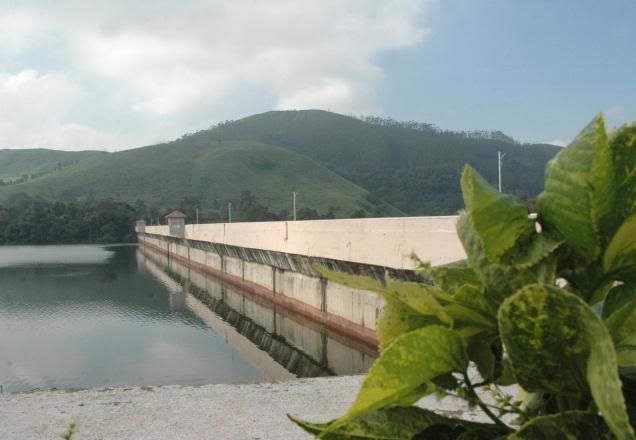Happened to read this article titled “Why Designers Hate Crowdsourcing” in Forbes.com when a friend gave me the link and asked for the thoughts on the subject. I could totally relate to everything said in the article as I have worked in these online market places for a long time.
I think this is the bad side of Crowdsourcing. People take up someone else’s work and leave them empty handed. The problem is with both buyers and sellers in these online market places. And these online market places are more buyer friendly.
Very often, almost all buyers demand to see a mock-up of the design that you propose BEFORE awarding you the project. Okay, perhaps one mock-up is fine to showcase what you are capable of but many of them wants to see two or more mock-ups from each seller (consider the fact that there are thousands of online sellers – freelancers / companies – waiting to get a project in these websites). Then they request revisions to these mock-ups (you can’t resist the revisions when you see a message from the buyer saying, “I like what you have done in the initial version. You are in my top 2 shortlist and we are almost getting there.“). Even after all these are done, you would see that your work proposal was rejected. Sometimes the project is awarded to someone else, sometimes it is awarded to none and the buyer gets away with it. Even if the project IS awarded to someone, you would see that his/her bidding amount was less than your proposed amount. And your hours of work would be gone without any reward.
What would have happened is this – the buyer asks for mock-up from all those who have placed a bid on the project. Here he gets a lot of options – from people of all skill levels. He combines the best and takes it to someone who can do a copy of the design he chose for a much cheaper price. The way I realized this is when a buyer asked me if I could design something like a mock-up he had shown that some other seller had designed for him (I rejected the offer by the way, as this very act was well enough to question the business ethics of that man and there is a fair chance of me not getting paid for my work. Plus, it insults my capability of doing a design myself).
The websites which act as the middle men can do so much to change this. They could set a minimal price for mock-up. Or say, you could see the portfolio of the sellers first to see what they are capable of (verifying that the showcased projects are indeed done by that individual/company is not too much of a task – just some Google searches or a couple of emailing would do) and award the project only if you like their work portfolio. And then you can ask for mock-ups after you set the milestones of a project. That way you can stop at any milestone point of the work and your money for the project is not wasted even if something goes wrong. But these websites do not do any of that.
Some websites do have a dispute option (but that is NOT applicable to such mock-up games but only for the time after awarding a project), but when you initiate a dispute between you and the buyer, both accounts would freeze until the dispute is over! If you are a freelancer and depends on it for a living, this is something you wouldn’t prefer and you would ignore your loss and begin hunting for the new work. And even if you proceed with the dispute, most likely the buyer’s account would be set free in a few days. Yours, locked up for a long time.
But many new comers who want to get started with their career in freelancing falls for providing mock-ups in the hope of bagging a project. And some are even ready to do the entire project for NO MONEY at all! Some bid for a cheap price that not even an individual who lives upon his work can’t even think of. And as far as India is concerned, all western buyers know the Rupee-Dollar difference and that they can always get quality work for a lot more cheaper price. So even if you convince a buyer of your skill set, and then ask for a rise in the pay, the chances are high of him discarding you and finding someone else with the same caliber for a much cheaper hourly rate or for the same hourly rate. You know this too, so you wouldn’t take the risk unless you find someone else who is ready to pay you a higher hourly rate until that buyer finds out someone who works for a lesser hourly rate. 🙂 This applies not only to the online market places, but to individual clients we meet over the Internet as well. So your aim should be to find newer clients or an alternate client in the backup so that even if you lose one client, you have another to survive.
All of these projects in these online market places are of small businesses (though there are projects worth thousands of dollars posted everyday in these websites – I hope someone would someday come up with a statistical data of the money that flows in these websites everyday and the money that these websites earn everyday in terms of commission) and big companies like Apple or Microsoft or even the 2,3,4 tier professional companies would not use these sites for projects for various professional reasons. So this looting goes unnoticed by the mainstream media.
When we read the story of “contest” in 99designs, we could end up saying, “but hey, some of those people knew that their designs might not be making to the list“, but it is still looting. Looting your creativity, your time and your skills.
 When Mar George Alancherry was ordained a Cardinal, the newspapers wrote about how humble he is and how much he respects the Indian tradition with wearing a
When Mar George Alancherry was ordained a Cardinal, the newspapers wrote about how humble he is and how much he respects the Indian tradition with wearing a  How do you judge a society’s morale and progress? Is it possible to judge them by taking a look at how the society treats it’s women and children? If so, Keralam has shown an example of it’s morale and progressiveness by the incident of a minor girl being sexually abused. The incident took place in the coastal village Mangalam in Alappuzha district. A 12 year old girl was sexually abused by her neighbor who is a father of two children. The girl did not feel well after the incident and was afraid she could get pregnant so she shared it with her friend in the school.The friend shared it with her family.
How do you judge a society’s morale and progress? Is it possible to judge them by taking a look at how the society treats it’s women and children? If so, Keralam has shown an example of it’s morale and progressiveness by the incident of a minor girl being sexually abused. The incident took place in the coastal village Mangalam in Alappuzha district. A 12 year old girl was sexually abused by her neighbor who is a father of two children. The girl did not feel well after the incident and was afraid she could get pregnant so she shared it with her friend in the school.The friend shared it with her family.
